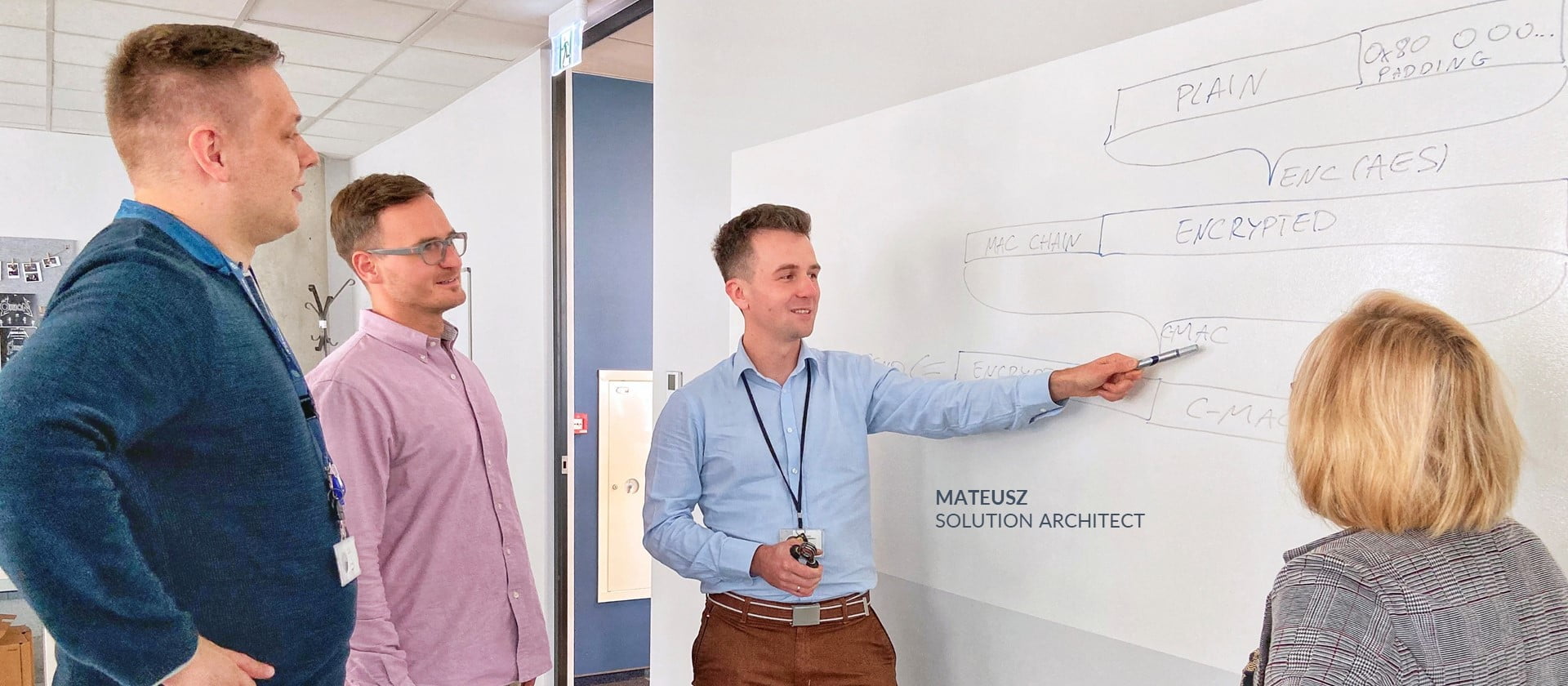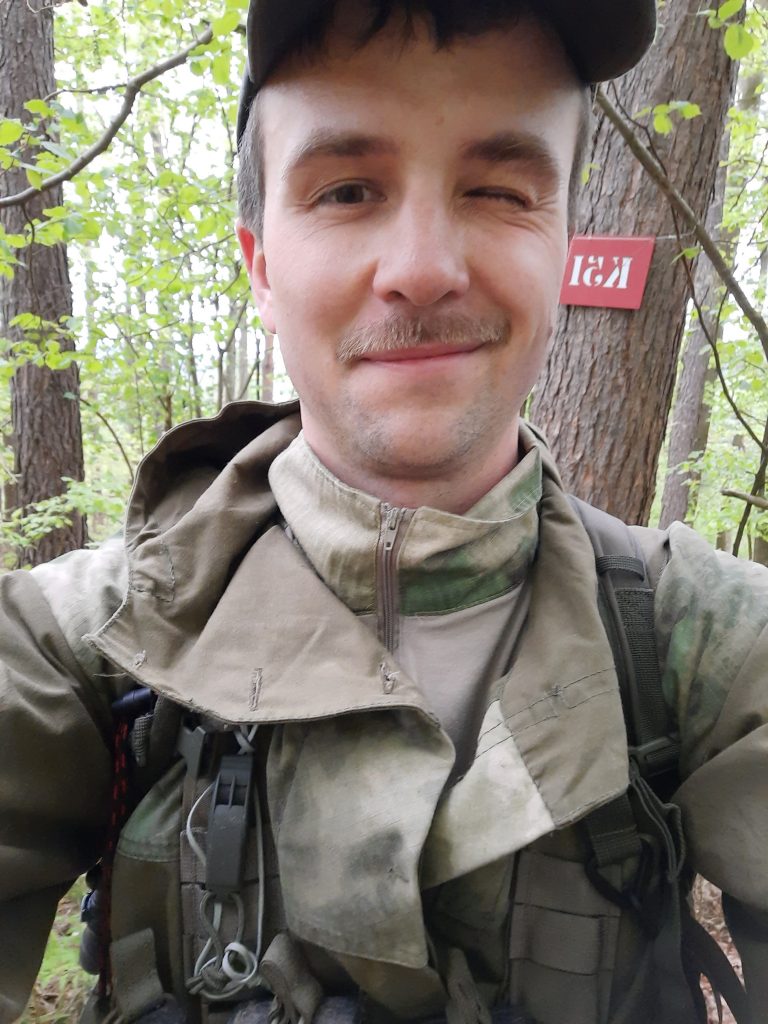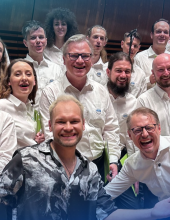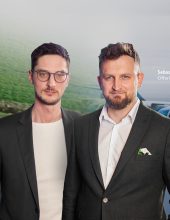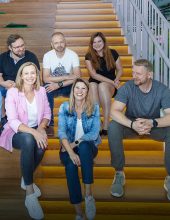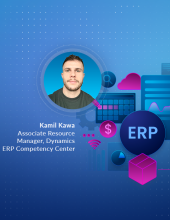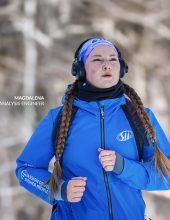Is it the architect’s job to draw rectangles and arrows? Meet Mateusz who has been at Sii for over 10 years and discover his ambitious career path and survival passion
Mateusz Januszkiewicz, Solution Architect, has been working at Sii for over 10 years. During that time, he held roles such as a developer, a team leader, a project coordinator and an architect, he worked for clients from several industries and in teams of various sizes. Find out more about his career path and check what he values most about Sii.
Tell us your story at Sii. How did your career path start and how is it going?
Mateusz Januszkiewicz: I have been working at Sii since 2011, so by all standards, I can be called a dinosaur. I am a robotics automation specialist by education. I have dealt with embedded systems from the beginning of my studies as if in spite of the field I studied. At that time, I also carried out commercial projects on the border of automation and embedded systems for local companies. Later, I only changed the proportions in favor of the latter. I submitted my CV to Sii while still a student at the job fair. Then it went quickly, and HR and technical interview, and so in August 2011 I was hired as a software engineer.
You worked as a developer, team leader, project coordinator and architect. Which of these job changes was the most difficult for you?
M.J.: Moving from developer to team leader, I had more soft skills duties: managing a team, reporting progress, solving not always technical problems. There were a lot of elements, such as communication in the team and on behalf of the team, organizing business trips, reporting, various types of approvals and settlements.
However, I feel I reached a higher level by becoming an architect – first in the project, and then it became my official position in the organization.
And this stage was the most difficult for me. Because the architect at Sii stands on a specific tripoint between the client’s organization, the team implementing the project and the organization on the Sii part. Contrary to appearances, this is not a purely technical position.
And which of these roles suit you best?
M.J.: I like the role of a solution architect the most. It combines both the conceptual, strictly technical part and a lot of soft elements: discussions, arguments, compromises and sometimes choosing the lesser evil. It is not overloaded with organizational matters, compared to the role of a team leader.
Coming back to being an architect, this is a job that requires the proportion of technical skills to soft skills that suits me best and in which (I hope) I work best. I can code, chat and scratch. Some say that the solution architect’s job is to draw rectangles and connect them with arrows. When you think about it, this is actually true.
Your career in the company includes at least 5 different projects. Were there any significant differences between the style of work in individual teams?
M.J.: In the last 10 years I have worked both alone, in small (3 people) and large (50 people) teams. We have implemented long-term projects and there were also quick actions lasting literally one day.
From the technological and task side, we touched probably every aspect related to software development: analysis, design, implementation, maintenance, quality assurance, automation. Wherever it was necessary to prepare software in C and C ++ and implement it on a dedicated (micro) controller – we approached it with full confidence. In addition to the two main technologies already mentioned, we added a number of side ones: from bash and python scripts, through cryptography to automation using Jenkins.
The style of work has obviously changed between projects and clients and has evolved like the entire IT industry. I remember with nostalgia my first project for a UTC client and my first foreign project for NXP.
The work culture in all teams was similar. It was a mixture of our understanding of the agile methodologies at a given moment, the requirements and limitations set by the client, and a greater or lesser dose of chaos and the unknown. We have always tried to be independent and proactive in looking for solutions so that the client sees us as help and a partner in discussion, and not just workers, who needed to be indicated what and where to do.
Of course, it wasn’t always just optimistic. I happened to work for a client who made it clear from the beginning that the decisions belonged to him and did not expect our comments and suggestions. Interestingly, it was a Scandinavian client … It was a difficult two years.
Currently, I work on a very nice project, also Scandinavian, and I really appreciate both the technical challenges and the atmosphere in the team as well as the relationship with the client.
You have spent over 10 years in Sii. From the perspective of an observer of long term changes in the company, what do you value the most?
M.J.: In the long term, we have grown a lot and matured as a company. Many processes have been formalized and automated – from customer acquisition, through business trip settlement to the generation of financial reports and statistics. What 5 years ago required manual work and verification by several people, today can be done with a few clicks.
I really appreciate the formalization and structuring of the sales process and the preparation of offers. We’ve been a bit intuitive in the past and depending on the team or particular salesperson, the whole process might have been different. Currently, I know exactly what elements of the offer I have to prepare as an architect and I require the necessary information to be provided by the sales.
How do you relax after work? Tell us about your hobby 😊
M.J.: My hobby has changed over the years as well. Previously, I did a lot of DIY, carved in wood and mechanized on all kinds of cars and motorcycles.
I have been practicing sport shooting for 5 years. Initially, in its classic, static version, shooting at 25, 50 or 100 m from three positions. This sport teaches patience, humility and self-control. Its indispensable element is also mathematics – after all, ballistics issues are described using a number of formulas.
Recently, I have become deeply involved in tactical shooting in its survival form. Apart from a number of minor competitions in the dynamic shooting formula – the culmination of this form of sport for me is the 24h competition called “Lekka Piechota” organized twice a year. In short: starting in pair, you need to cover on foot between 30 and 50 km carrying the full equipment, provisions, weapons and ammunition. In the meantime, you need to find about 30 navigation points scattered in the forests and arrive at the designated time at the shooting range and perform several dozen shots at a distance of 5 to 350 m combined with agility tasks: climbing, crawling in the underground tunnel, dragging the tractor tire on the chain, etc. These are international competitions in which both civilians and uniformed services from all formations take part.
Preparations for the aforementioned competition take a large part of the year and combine shooting training, field trips, fitness training and an analysis of the mistakes made before: from the prosaic ones, such as unexpected heat and too little water supply, to the breakdown of the weather at night and the need to sleep on the bare ground in the forest, because I did not take into account that it would be useful to take a sleeping bag. My big dream is to prepare and take part in the Sniper Extreme sniper competition.
Do you want to have an impressive careers path, such as Mateusz? Join us and find a project for yourself! Check our job offers!

